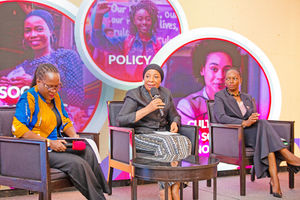Why it’s Africa that needs climate finance the most

Developing or least developed countries (including all African states) need to factor in elusive climate risks. PHOTO | FILE
The past few weeks were historic in the emerging sector of climate finance.
On June 23-29, Green Environment Fund (GEF) held the Sixth GEF Assembly in Vietnam. The GEF was established on the eve of the 1992 Rio Earth Summit to help tackle our planet’s most pressing environmental problems.
Over 450 projects
It has since provided over $17.9 billion in grants and mobilised $93.2 billion in co-financing for over 450 projects in 170 countries.
One of these challenges is climate change. The Da Nang meeting paved the way for its seventh funding cycle, GEF-7.
During the same week, July 1-5, the Green Climate Fund (GCF) — the most capitalised, hence largest, international environment fund (focused on climate change) — had historic events.
The 20th quarterly GCF board meeting (B.20) was held in the Korean smart city of Songdo.
Approves applications
The board approves applications for funding to safeguard sectors and economies from adverse effects of a changing climate.
A third fund, also created under the Kyoto Protocol of the United Nations Framework Convention on Climate Change (UNFCCC) like GCF and GEF, has committed $477 million in 76 countries since 2010.
Why climate finance? Climate is actually changing. Farmers are devastated by either too much or insufficient rain. Countries can’t feed themselves as crops and livestock fail. New diseases are developing and old ones spreading to new locations.
Developing or least developed countries (including all African states) need to factor in the elusive climate risks. Kenya spent an unplanned Ksh245.3 billion last year on food imports following a severe drought.
This year, it faced the worst floods in 60 years, according to the Climate Change Resource Centre. What follows is famine because crops were destroyed, while the ruined infrastructure will cost a fortunes to repair.
These resources would have gone to other development needs but have to be diverted to tackle these climate events and effects, leaving a big gap in financing vital national development areas.
So, climate change directly sabotages development. This financing gap is filled by climate finance.
The GCF is valued at $13 billion. Applications for financial support can be made to the fund. For instance, most African states depend immensely on rain-fed agriculture.
The 2016 Climate Change Exposure Index (CCEI) by Verisk Maplecroft, a risk analytics firm, show that relying on rainfall posed “high” or “extreme” risks — up to 85 per cent.
That means economic shocks. Countries may, therefore, miss the sustainable development goals and national aspirations.
Projects under implementation
The GCF has 76 projects under implementation valued at $1.4 billion, with only 28 (36.8 per cent) of them in Africa.
GCF lays strong emphasis on direct access entities — local institutions accredited to help a country to directly access its resources. There is just a handful in Africa so far.




